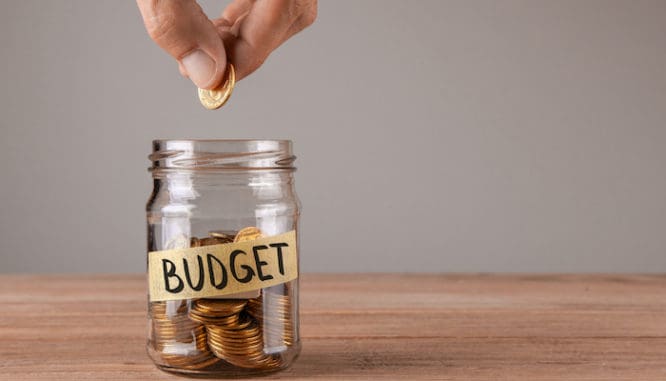What Does House Poor Mean, And How Can I Avoid It As A New Buyer?
- Published on
-
 Mary Clark Navarro Contributing AuthorClose
Mary Clark Navarro Contributing AuthorClose Mary Clark Navarro Contributing Author
Mary Clark Navarro Contributing AuthorMary Clark is a copywriter and marketer who loves all things real estate, tech, and business. When she's not writing or managing online campaigns, you can find her on horseback or drinking copious amounts of Costa Rican coffee.
Even though you’ve been looking forward to buying a house for years, now that you’re a prospective homeowner, there’s a lot more to consider than you had imagined. As you prepare to take on a mortgage and homeownership, you wonder what unpleasant surprises may be lurking for you. Will you discover a leaking water heater? Will there be enough money left in the bank after utilities to pay your mortgage? Are you on your way to becoming home poor?
The term “house poor” is scary enough to send any prospective buyer running from the homebuying process. A lot of the fear stems from just how vague the term is. What exactly does house poor mean? Is the classic financial advice that you should allocate 25% to 30% of your take-home income on housing expenses accurate? Are your finances doomed if you’re spending 35% to 40%?
While there’s a lot of confusion as to what “house poor” really means, there are ways to avoid overextending yourself as a new homebuyer. Let’s take a look at what it means to be house-poor, and how you can avoid it before you even start home shopping.

What exactly is house poor?
We hate to say “it depends,” but the definition of house poor really does depend on your income, location, financial goals, and debt. What’s house poor to one homeowner may be perfectly acceptable to another.
In its most basic terms, house poor means you are spending more than you can afford on your mortgage or can barely meet other payments (regardless of the proportion of income you’re spending on the mortgage).
You may hear a general rule of thumb to spend no more than 25% to 30% of your household’s total take-home income on your mortgage, which includes taxes, homeowner’s insurance, interest, and private mortgage insurance (if applicable).
However, when it comes to safely taking out a mortgage, a more important figure to look at is your DTI, or debt-to-income ratio. This is what your lender will look at when deciding how much home you can afford.
Your debt-to-income ratio looks at your total monthly debt payments (including credit cards, student loans, car payments, etc) and compares it with your monthly gross income. Basically your DTI is the percentage of your income you’re paying toward debts each month.
Most lenders will allow a DTI up to 43% (some programs may even go slightly higher), depending on the specifics of your financial situation. And while that allows for a bit more wiggle room, that means if you already have high debt payments each month, you may not be able to afford a mortgage payment that eats up as much as 30% of your take-home income.
How do people become house poor? They may take on a bigger mortgage payment than they can realistically afford. Or perhaps their income significantly decreases after purchasing the house. This change in income may be due to a job loss, demotion, or personal decision to stop working. Unexpected life events may also lead to significant income loss, such as a serious illness, injury, or even death of a working household member.
Additional expenses can also push homeowners into financial hardship, such as:
- Adding kids or other family members to the household
- Costs associated with going back to school or starting a business
- Unexpected home maintenance and repair costs

How to avoid a house-poor future
Thankfully, there are some steps you can take to set yourself up for financial success as a homeowner.
Maximize your down payment
First, make sure you’re saving as much money as you can for a down payment. You’ll pay this amount upfront, and your mortgage loan will cover what’s left over.
How much should you save for a down payment? Twenty percent of the home’s value is often the suggested target. If you put down 20% or more, you’ll be able to avoid private mortgage insurance (also called PMI on conventional loans, or just plain “mortgage insurance” or “MI” when applied to a government-backed loan). PMI is designed to protect mortgage lenders in case of default. Once your outstanding mortgage balance falls to 80% of the home’s value, you can generally have the PMI premium removed (although you may need to refinance to a new loan to remove mortgage insurance on certain government-backed programs).
Twenty percent may be attainable for prospective buyers with significant savings or those who already have equity in a home. For others, it may make more sense to shoot for a smaller figure and work to build up equity in the home. To help you determine a reasonable amount to save for a down payment (factoring in your loan type, home value, and market), crunch some numbers with a down payment calculator.
As you look at your options for a down payment, be sure to explore various financing options. There are many different types of mortgages out there. If you qualify for a VA or USDA loan, you may not need a down payment at all.
Budget for maintenance and more
No matter how much you decide to put down, you’ll need to budget for the ongoing costs of homeownership. These costs include property taxes, homeowner’s insurance, utilities, HOA fees (if applicable), and maintenance. It’s critical to factor these costs into your budget on the front end before getting a mortgage. That way you can land on a monthly payment that suits your long-term financial goals and doesn’t leave you feeling strapped.
Many first time homebuyers are surprised by the cost of basic home maintenance and even more taken aback by the financial damage major repairs can cause. There are many factors that play into how much home maintenance will cost you including past upkeep, value, location, size, and age of the home.
You’ll want to set aside a minimum of 1% to 2% of your home’s value each year for maintenance and repairs. Get comfortable performing basic maintenance to save money and flex your homeowner skills. A seasonal checklist can also help you stay ahead of minor issues before they turn into expensive problems. Aubrey Cook, a first-time homebuyer specialist in Colorado Springs, Colorado who sells homes 39% faster than the average area agent, advises her clients to make home maintenance a priority.
“You have to see a home just like a car. Every so many miles you’re changing the oil or the filter, for example. It’s the same thing with a home. If you don’t perform regular maintenance, just as with a car, your house will become run down and have issues. It’s the exact same thing — just on a larger scale.”
Polish up your credit score
Your credit score is a critical piece of securing a mortgage and making homeownership happen. Lenders weigh it heavily when determining if you qualify for a loan and how much they’ll lend you. Your credit score paints a picture of your payment history for lenders. You don’t need a credit score of 800 to buy a house, but you should work to get it into tip-top shape before applying for a mortgage. A better score will help you snag a lower interest rate on your mortgage, which means lower premiums and a more flexible budget.
If you don’t know your credit score already, start by getting a free comprehensive credit report from a trusted provider. You’ll want to look for any inaccuracies so you can have them removed before applying for a mortgage. Then, work on quick wins to raise your credit score step-by-step.
Lower your debt
Next, take a look at your debt-to-income (DTI) ratio by adding up all of your monthly debts and dividing them by your monthly gross income. Your DTI will need to be 43% or less (including your mortgage payment) for most lenders. However, depending on your monthly expenses, a DTI just below 43% may still be too high for you to avoid becoming house poor.
Mortgage banker Jenny Breaux of Renasant Bank recommends taking a more conservative approach.
“The generally accepted answer to avoiding becoming ‘house poor’ is the 28/36 rule. This means that 28% of your gross monthly income is spent on total housing expenses and your total debt (car, credit cards, loans, student loans, mortgage) should stay under 36%.”
There are also down payment assistance programs for certain professions and low-to-moderate-income homebuyers.
Shop for what you can really afford
It’s often tempting to purchase a home for the income you think you’ll have in five years instead of what you can truly afford now. However, it’s impossible to know how much money you’ll make in the future. Instead, make sure whatever mortgage payment you settle on is one that you can handle in the here and now.
Then, shop for houses that fall into your price range, and stay there. It isn’t uncommon to get swept away by a home outside of your budget and feel tempted to justify a mortgage payment that’s higher than you can actually afford.
Save for emergencies
It’s also important to prepare for the unexpected. Employment changes do happen! If you have a backup plan, you’ll be better equipped to meet your financial obligations as best as you can. In some households, it may make sense to look at mortgage payments that are doable on one salary.
Many financial planners recommend setting aside six months of living expenses for emergencies. These savings can keep you afloat if one household member is out of work or unexpected expenses pop up. That said, it’s much easier to save when your monthly mortgage payment is affordable. You’ll have more funds that you can allocate to a specific savings account than to a lender. This is just another reason to avoid shopping at the top of or outside of your price range.
To make your path to homeownership easier, get a feel for how much you can really afford and how to determine your savings goals. Then, when you start shopping for a home, you can do it with the confidence that you won’t wind up a house-poor homeowner.
Header Image Source: Hananeko_Studio / Shutterstock.com
